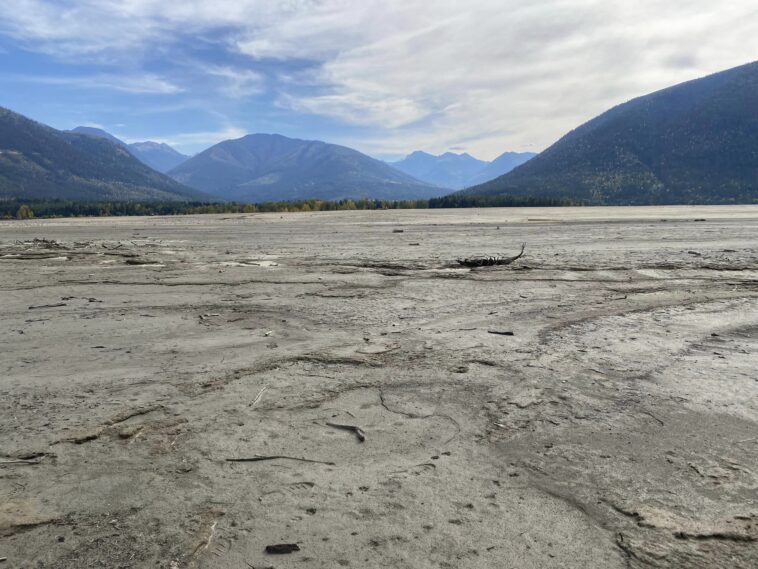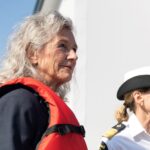The Arrow Lakes reservoir, a 230-kilometre-long body of water in the West Kootenays, has reached its lowest levels in twenty years, causing growing concern among community members who are now calling for action from the provincial government.
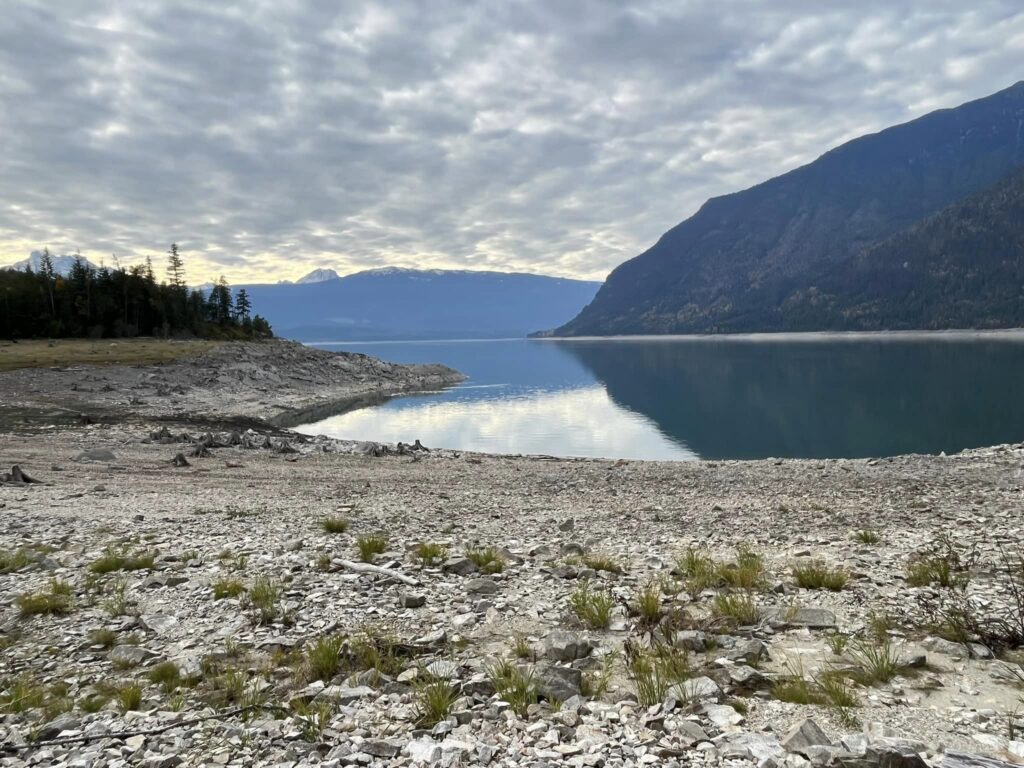
“Our habitats are suffering, our fish are suffering, people’s properties are being ruined — it goes on and on.”
Victoria Youmans, Naskup resident and representative of Slow the Flow
The decline in water supply is partly due to a year of high temperatures and low rainfall that resulted in early snowpack melt and unprecedented drought levels throughout the province. The other key factor is the impact of the Columbia River Treaty between the U.S. and Canada. Since the Treaty entered into effect in 1964, Canada has been redirecting its fresh water supply from Arrow Lakes across the border for American use. Now, West Kootenay residents are concerned that long-standing imbalances in the agreement are jeopardizing the reservoir and the surrounding ecosystem.
Slow the Flow
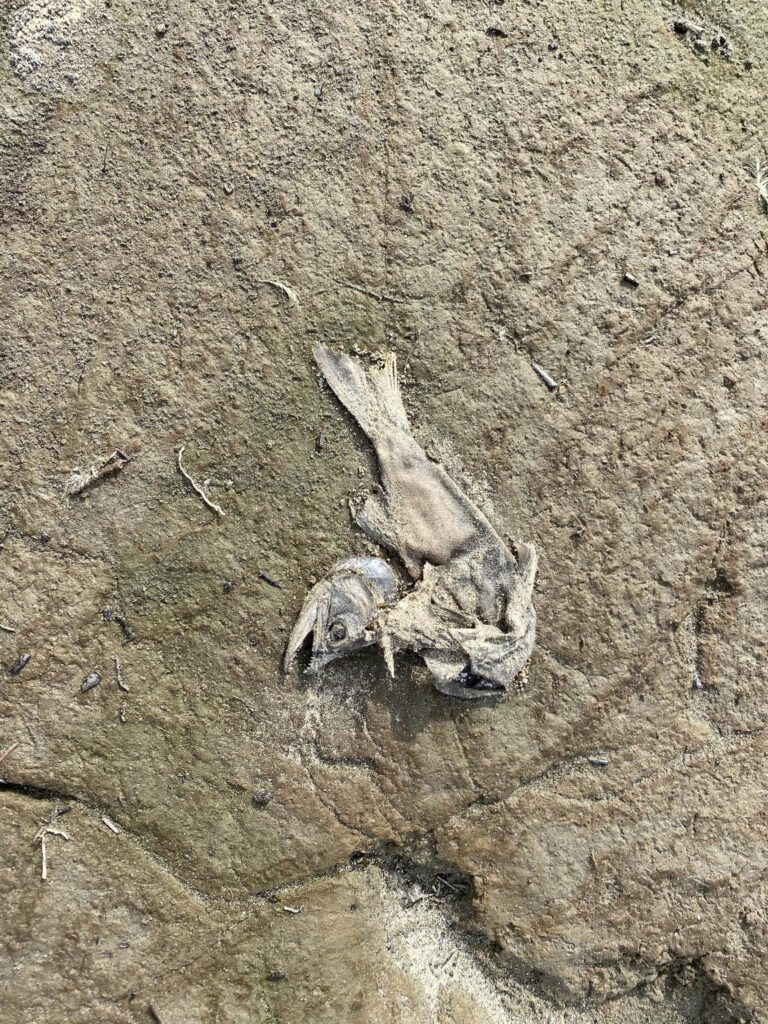
A Facebook group of nearly 4000 concerned citizens called Slow The Flow of Arrow Lakes has been bringing attention to the dwindling water levels in Arrow Lakes. The group is alarmed about the over-sized influence the Americans have on the reservoir’s water, for which the U.S. pays millions of dollars. The so-called ‘Canadian entitlement’ ranges from $150 million to $200 million a year and is sent back north across the border as hydroelectric power generated by American dams.
“Our habitats are suffering, our fish are suffering, people’s properties are being ruined — it goes on and on,” Victoria Youmans, Naskup resident and representative of Slow the Flow, said to CBC News. She said she had seen thousands of dead fish washed up on the Arrow Lakes shores. Kokanee salmon are particularly vulnerable as they may not be able to travel and spawn in their normal waterways at such low levels.
There are additional commercial concerns, including tourism and recreational activities. Even local forestry companies can no longer rely on the lakes to move logs. Residents also expressed concern about the lake’s low water levels affecting emergency situations, like the numerous forest fires witnessed this year. If an emergency evacuation was necessary, they say their boats would be unusable in shallow waters.
Columbia River Treaty
When the Columbia River Treaty came into effect 62 years ago, “it probably was one of the most important — if not the most important — water treaties in the world,” Nigel Bankes of the University of Calgary’s Faculty of Law told the Northern View.
“They were forced off their land; they lost their homes, their farms and their livelihoods, many to die shortly after their forced relocation. The stress was simply just too much.”
Colleen Lakecold, resident
The Treaty followed the 1948 disastrous flooding of the Columbia River that wiped out the town of Vanport, Oregon. After the catastrophe, Canada and the U.S. agreed to cooperate on flood control of the River and built four dams, three in B.C. and one in Montana, which would also harness hydroelectric power. At the time, 2000 residents between Revelstoke and Castlegar were removed from their homes to make way for the dam projects.
The project was moved forward by B.C. Hydro without much compensation for locals, and the painful ordeal echoes to this day. “The wounds have not healed 60 years later,” resident Colleen Lakevold detailed to Alaska Highway News. “They were forced off their land; they lost their homes, their farms and their livelihoods, many to die shortly after their forced relocation. The stress was simply just too much.”
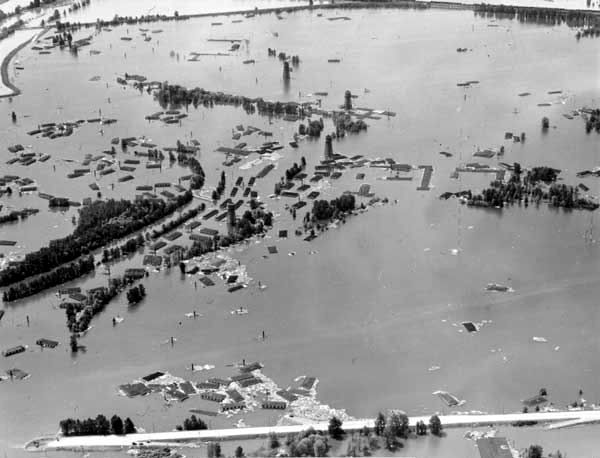
The agreement has further been criticized since the outset for its lack of consultation with First Nations and the subsequent destruction of cultural and heritage sites. In 2018, Chief Wayne Christian called it “quite disturbing” and “a slap in the face” that the Shuswap Nation Tribal Council and other BC First Nations were not invited to the Treaty re-negotiations that had begun that year.
The Treaty is currently set to expire in 2024 and is now in its nineteenth round of negotiations. These renewed talks are attempting to update the agreement to include ecological considerations, salmon stock protections, and proper input from Indigenous peoples who have been historically excluded. As of October 13th, the negotiations have led to an ‘agreement in principle’ though the provincial government states they are “committed that no modernized treaty will be finalized until the people of the Columbia Basin have been consulted.”
B.C. Hydro
In response to the shrinking reservoir, the province has sent in biologists to monitor the water line and Kokanee salmon spawning behaviour. B.C. Hydro also negotiated with the U.S. to hold back additional waters in the springtime, they say, resulting in levels 2.4 metres higher from May to August.
“What used to be a lush, beautiful place is literally a desert,”
Victoria Youmans, Naskup resident and representative of Slow the Flow
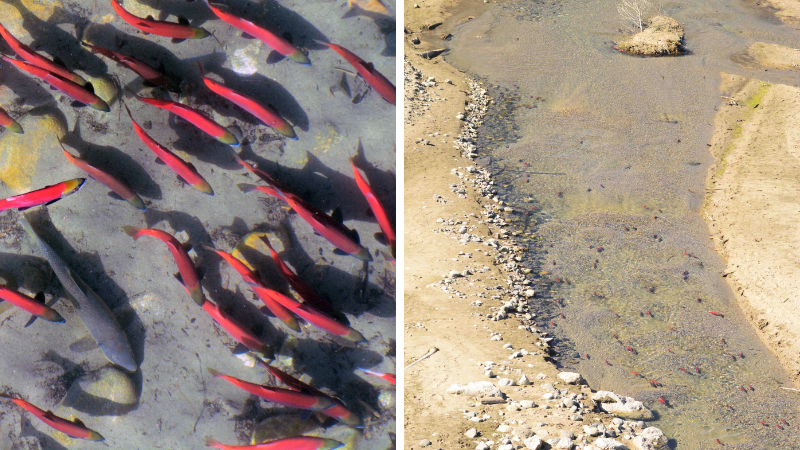
“We have taken a number of steps to support Arrow [Lakes]. That being said, we can’t override Mother Nature,” Mary Anne Coules of B.C. Hydro’s community relations team said to CBC. “Unfortunately, there’s only so much we can do and so much flexibility we have in drought conditions.”
As for Youmans, she plans to continue to be vocal in the upcoming community consultations. “What used to be a lush, beautiful place is literally a desert,” she said in a video posted to the Slow the Flow Facebook group. “I never want to look into my son’s eyes and say, ‘I didn’t try. I stood by idly and didn’t do a thing.'”


